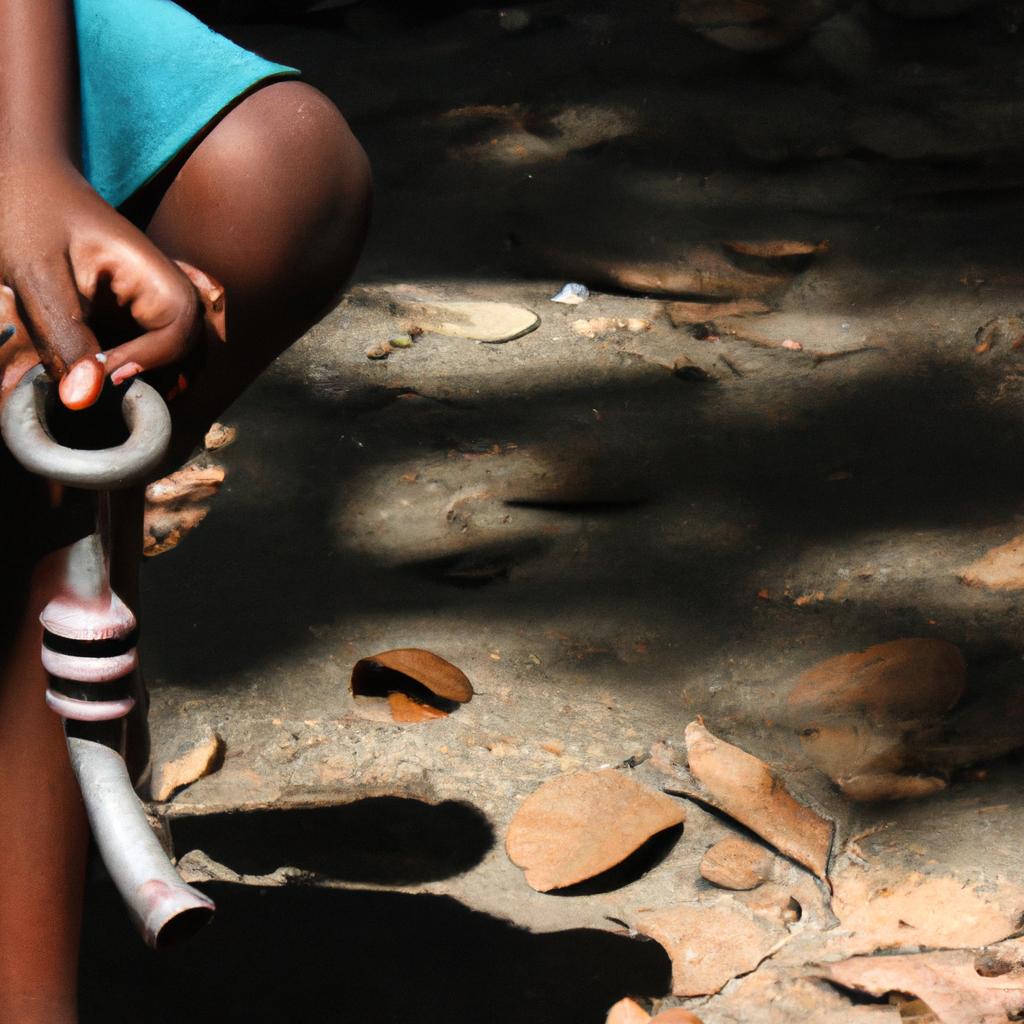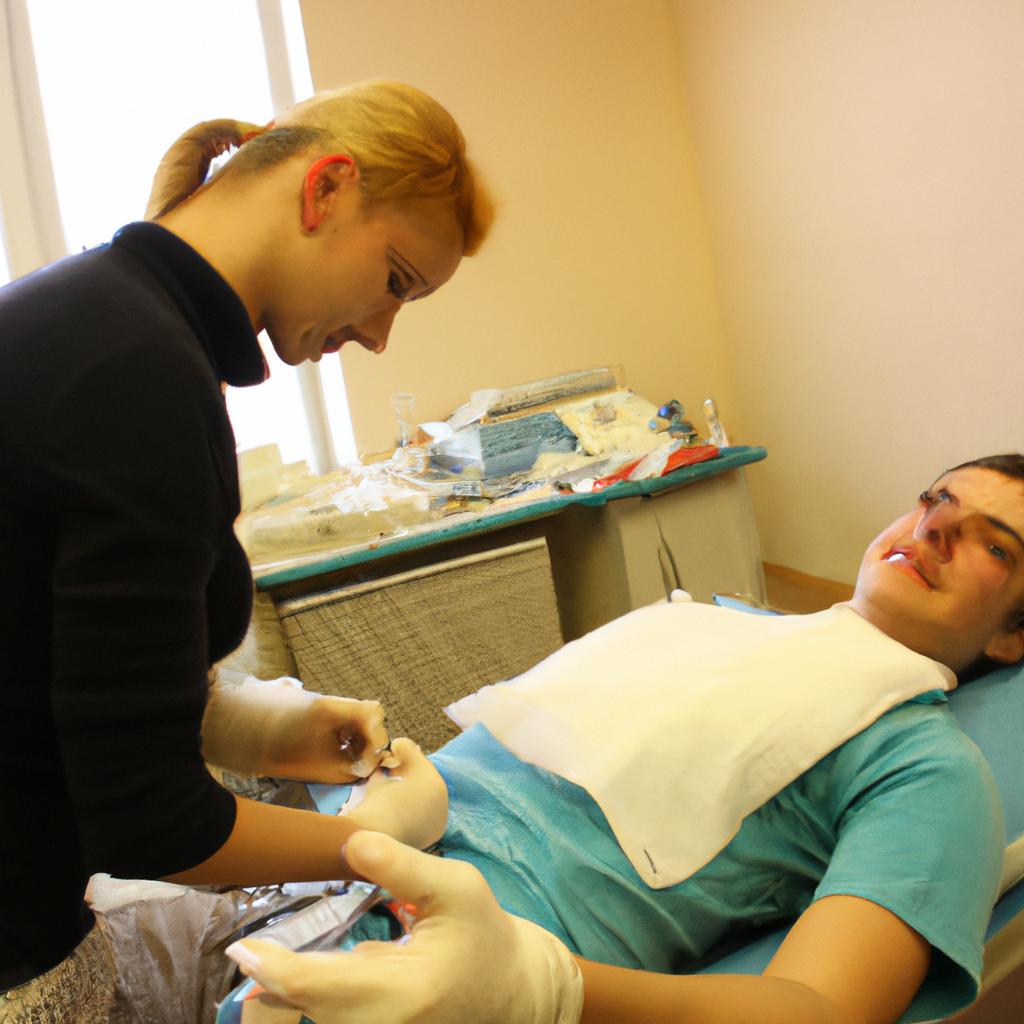Education is considered a fundamental right and a powerful tool for social mobility. However, various barriers hinder equal access to quality education, perpetuating the cycle of poverty in society. One example that exemplifies this issue is the case of Maria, a bright and ambitious student from an underprivileged background. Despite her determination and potential, she faces significant obstacles on her educational journey due to socioeconomic factors.
Societal issues such as poverty play a crucial role in creating education barriers that restrict opportunities for individuals like Maria. Poverty affects not only one’s financial circumstances but also impacts overall well-being, including housing stability, healthcare accessibility, and nutritional adequacy. These interrelated aspects contribute to limited resources available for education-related expenses such as school supplies, transportation costs, or even basic necessities like food and clothing. As a result, children from impoverished backgrounds often lack the necessary support systems and resources vital for academic success, hindering their ability to fully engage in learning experiences and reach their true potential. In order to address these systemic challenges effectively, it is essential to understand the multifaceted nature of poverty’s impact on educational outcomes and explore strategies aimed at breaking down its barriers within society.
Lack of Access to Quality Education
Lack of Access to Quality Education
Access to quality education is a crucial aspect in addressing the barriers faced by individuals living in poverty. One example that highlights this issue is the case of Sarah, a young girl from a low-income family residing in a disadvantaged neighborhood. Despite her eagerness to learn and excel academically, Sarah faces significant challenges due to the lack of access to quality education resources and opportunities.
One prominent barrier is inadequate infrastructure and facilities within schools located in impoverished areas. These schools often lack essential resources such as libraries, laboratories, and computers, limiting students’ exposure to practical learning experiences. Furthermore, overcrowded classrooms hinder effective teaching methods and personalized attention for each student. The inability to provide an optimal learning environment significantly hampers academic progress and diminishes educational outcomes.
Moreover, limited availability of qualified teachers exacerbates the problem. In many underprivileged communities, there is a shortage of well-trained educators who possess subject matter expertise and pedagogical skills necessary to deliver high-quality instruction. As a result, students are deprived of proper guidance and mentorship needed for their intellectual development.
- Inadequate school facilities deprive children of enriching educational experiences.
- Overcrowded classrooms restrict individualized attention and hinder effective teaching.
- Shortage of qualified teachers limits students’ access to quality instruction.
- Educational disparities perpetuate cycles of poverty within marginalized communities.
Additionally, incorporating a table can help visually emphasize the impact of these barriers on different aspects:
| Barrier | Impact |
|---|---|
| Inadequate Resources | Limitation on practical learning experiences |
| Overcrowding | Reduced teacher-student interaction |
| Lack of Qualified Teachers | Hindrance to academic growth |
Considering these factors mentioned above indicates that addressing the lack of access to quality education is vital for combating educational barriers faced by individuals living in poverty.
The subsequent section will delve into another significant impediment to education – financial constraints. Understanding the relationship between poverty and limited financial resources can shed light on additional challenges that need attention for achieving equitable access to education.
Financial Constraints on Education
Addressing Poverty: Financial Constraints on Education
Building upon the lack of access to quality education, another significant barrier faced by individuals from impoverished backgrounds is financial constraints. These barriers further hinder their ability to obtain a quality education and perpetuate the cycle of poverty.
Example: For instance, consider the case of Maria, a bright student with aspirations of pursuing higher education. Despite her academic potential, she comes from a low-income household where her parents struggle to cover basic expenses, let alone afford educational materials or tuition fees. As a result, Maria’s dreams of accessing quality education are significantly limited due to the financial challenges imposed by her socioeconomic circumstances.
- Inability to afford textbooks and necessary learning resources leaves students at a disadvantage.
- Limited access to extracurricular activities and enrichment programs restricts holistic development.
- The burden of working part-time jobs alongside studying leads to physical and mental exhaustion.
- Difficulty affording transportation costs inhibits attendance rates and participation in school-related activities.
In order to visualize the extent of these challenges, here is a table highlighting some key aspects affected by financial constraints on education:
| Aspect | Impact | Emotional Response |
|---|---|---|
| Affordability | Limited options for high-quality schools | Frustration |
| Access to technology | Lack of technological skills | Disadvantage |
| Participation in sports | Missed opportunities for skill-building | Disappointment |
| Educational trips | Restricted exposure to real-world context | Limitation |
As we recognize these challenges faced by marginalized communities due to financial limitations, it becomes crucial for society as a whole to take action. By acknowledging that every individual deserves equal opportunities regardless of their socio-economic background, we can work towards creating an inclusive educational system that addresses these financial barriers.
Inadequate educational facilities are yet another substantial hurdle faced by individuals seeking quality education. By examining the shortcomings in infrastructure and resources, we can gain a deeper understanding of the multifaceted nature of the barriers encountered by impoverished communities.
Inadequate Educational Facilities
Section H2: Inadequate Educational Facilities
Transitioning from the previous section on financial constraints, it is important to recognize that poverty not only affects individuals financially but also impacts their access to quality education. One example of this issue can be seen in rural communities where inadequate educational facilities contribute to significant barriers in learning.
In these areas, limited funding often results in schools lacking essential resources and infrastructure necessary for a conducive learning environment. For instance, let us consider a hypothetical case study of a small village located in an underprivileged region. The sole school in the area struggles with overcrowded classrooms, dilapidated buildings, and insufficient teaching materials such as textbooks and technological devices.
The consequences of such inadequate educational facilities are far-reaching and hinder students’ ability to learn effectively. To further highlight the severity of this issue, we present the following bullet points:
- Insufficient classroom space leads to overcrowding and reduces individual attention.
- Dilapidated buildings pose safety risks, affecting both physical and mental well-being.
- Lack of proper sanitation facilities hampers hygiene practices among students.
- Limited availability of teaching materials inhibits comprehensive learning experiences.
To emphasize the impact visually, we provide the following table showcasing specific challenges faced by students due to inadequate educational facilities:
| Challenges Faced by Students |
|---|
| Overcrowded classrooms |
| Unsafe and rundown buildings |
| Inadequate sanitation |
| Lack of teaching materials |
Addressing these issues requires substantial investment in improving educational infrastructure across impoverished regions. Efforts should focus on constructing new schools or renovating existing ones, ensuring adequate classroom sizes, safe environments, proper sanitation facilities, and sufficient provision of teaching materials. By prioritizing the enhancement of educational facilities within marginalized communities, authorities can create an enabling environment that promotes equitable access to quality education for all.
This discussion highlights how financial constraints directly link to inadequate educational facilities as additional obstacles hindering equal opportunities for education. In the subsequent section on limited learning resources, we will examine another significant barrier that perpetuates educational disparities among marginalized populations.
Limited Learning Resources
Addressing the issue of inadequate educational facilities is crucial in overcoming education barriers caused by poverty. Without proper infrastructure and resources, students from disadvantaged backgrounds face significant obstacles in accessing quality education. For instance, consider a hypothetical case study of a school located in an underprivileged neighborhood. This school lacks basic amenities such as functioning classrooms, libraries, and laboratories.
To further highlight the challenges faced due to inadequate educational facilities, we can look at the following effects:
- Limited classroom space results in overcrowding, making it difficult for teachers to provide individual attention to students.
- Inadequate or outdated teaching materials hinder effective learning and limit students’ exposure to new concepts and ideas.
- The absence of well-equipped science labs prevents hands-on experiments and practical demonstrations that are essential for understanding scientific principles.
- Insufficient technology infrastructure denies access to digital learning tools and inhibits technological literacy development.
These limitations not only impede academic progress but also adversely impact students’ motivation and self-confidence. To better understand these implications, let us examine a table showcasing some psychological effects experienced by students attending schools with poor facilities:
| Psychological Effects | Description |
|---|---|
| Feelings of inferiority | Students may develop low self-esteem due to comparing their situation with those who have access to better resources. |
| Lack of motivation | Limited opportunities for growth and improvement can lead to decreased interest in academics. |
| Sense of hopelessness | Persistent exposure to subpar conditions can engender feelings of despair about future prospects. |
It is evident that addressing inadequate educational facilities requires urgent attention. By investing in infrastructure improvements, policymakers can create an environment conducive to learning, fostering greater engagement among students.
Transitioning into the next section on limited learning resources, it becomes clear that tackling education barriers must involve a multifaceted approach encompassing various aspects contributing to educational inequality.
Educational Inequality
Education Barriers in Society Issues: Addressing Poverty
Limited Learning Resources often go hand in hand with the issue of poverty, exacerbating educational inequalities among students. Without access to adequate learning resources, students from low-income backgrounds face significant challenges that hinder their academic progress and overall achievement. For instance, consider the case of Sarah, a high school student living in an underprivileged neighborhood. Due to limited financial means, she lacks essential resources such as textbooks, computers, and internet access at home. As a result, Sarah struggles to keep up with her classmates who have access to these necessary tools for effective learning.
The absence of proper learning resources perpetuates the cycle of disadvantage faced by impoverished students. To grasp the gravity of this issue, let us examine some key barriers they encounter:
- Limited access to textbooks and other reading materials: Many families cannot afford to purchase textbooks or provide their children with supplementary reading materials. This lack prevents students from fully engaging with course content and deeply understanding concepts.
- Inadequate technological infrastructure: The digital divide is particularly pronounced among economically disadvantaged communities where computer labs are scarce or nonexistent. Students without regular access to technology miss out on opportunities for interactive online learning experiences and fall behind their peers.
- Absence of extracurricular activities: Low-income schools often struggle to offer diverse extracurricular programs due to budget constraints. These activities play a vital role in holistic development and fostering critical thinking skills outside traditional classroom settings.
- Insufficient support systems: Financial limitations can impact not only access but also availability of tutors or additional academic support services for struggling students. Without personalized assistance, it becomes increasingly challenging for them to overcome educational obstacles.
To further understand the dimensions of limited learning resources within the context of poverty, we present a table highlighting various challenges faced by socioeconomically disadvantaged students:
| Challenges | Impact |
|---|---|
| Lack of textbooks | Hinders comprehension and study habits |
| Limited access to technology | Restricts online learning opportunities |
| Inadequate extracurricular activities | Limits holistic development outside the classroom |
| Insufficient support systems | Hinders academic progress and growth |
Addressing these barriers requires a multifaceted approach involving collaboration between government bodies, educational institutions, and community organizations. By investing in initiatives such as providing free textbooks, improving technological infrastructure, expanding extracurricular programs, and offering targeted support services for disadvantaged students, society can begin dismantling the education barriers arising from poverty.
Socioeconomic Impact on Academic Achievement is another crucial aspect that warrants attention in our exploration of education barriers. Understanding how economic status affects student performance sheds light on broader issues related to educational inequality and social mobility.
Socioeconomic Impact on Academic Achievement
Addressing Poverty: A Crucial Step in Overcoming Educational Barriers
Continuing the exploration of educational inequality, it is imperative to acknowledge that poverty plays a significant role in perpetuating disparities within our education system. The socioeconomic status of individuals and communities often acts as a barrier to accessing quality education, limiting opportunities for academic achievement. To illustrate this point, let us consider the hypothetical case study of Alex, a bright student from a low-income family.
Alex’s parents struggle to make ends meet and cannot afford resources such as tutoring or extracurricular activities. As a result, Alex lacks the additional support necessary to thrive academically. This anecdote highlights just one example of how poverty can hinder educational progress. However, there are broader societal issues at play that contribute to these barriers:
-
Insufficient funding for public schools: Schools located in economically disadvantaged areas frequently receive less funding compared to those in wealthier neighborhoods. Consequently, students attending underfunded schools may face overcrowded classrooms, outdated materials, and limited access to technology.
-
Inadequate nutrition and healthcare: Poverty often leads to food insecurity and inadequate access to healthcare services. Malnourishment and untreated health conditions can negatively impact children’s cognitive development and overall academic performance.
-
Lack of parental involvement: Financial constraints may prevent parents from being actively involved in their child’s education due to long work hours or multiple jobs. Limited parental engagement can impede learning outcomes by depriving students of crucial guidance and support at home.
-
Unequal distribution of educational resources: Higher-income families have greater opportunities to invest in private tutors, test preparations courses, or specialized programs that enhance academic success. Conversely, lower-income families lack access to these resources, further widening the gap between privileged and disadvantaged students.
To emphasize the magnitude of these challenges caused by poverty on educational outcomes visually, consider the following table:
| Challenges Caused by Poverty | Impact on Education | Solution |
|---|---|---|
| Lack of resources and materials | Limited learning opportunities | Increased funding for schools |
| Food insecurity | Impaired cognitive development | School-based nutrition programs |
| Inadequate healthcare access | Negatively affects overall health and attendance | Improved access to healthcare services |
| Limited parental involvement | Decreased academic support at home | Encouraging community engagement initiatives |
In conclusion, addressing poverty is a critical step towards dismantling educational barriers. By recognizing the socio-economic factors that hinder equal access to quality education, we can work collectively to implement targeted interventions that empower students like Alex to reach their full potential. Through increased funding, improved nutrition programs, enhanced healthcare access, and promoting parental involvement, we can create an environment where every student has an equitable chance at success.





